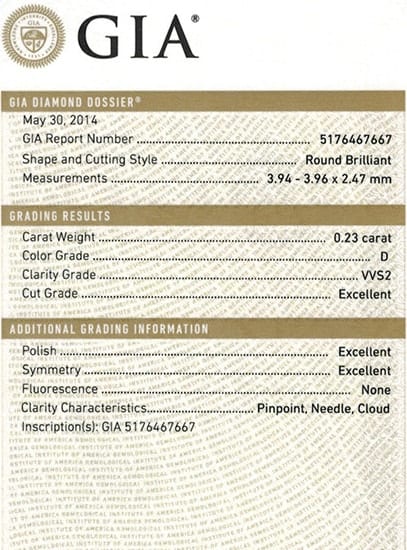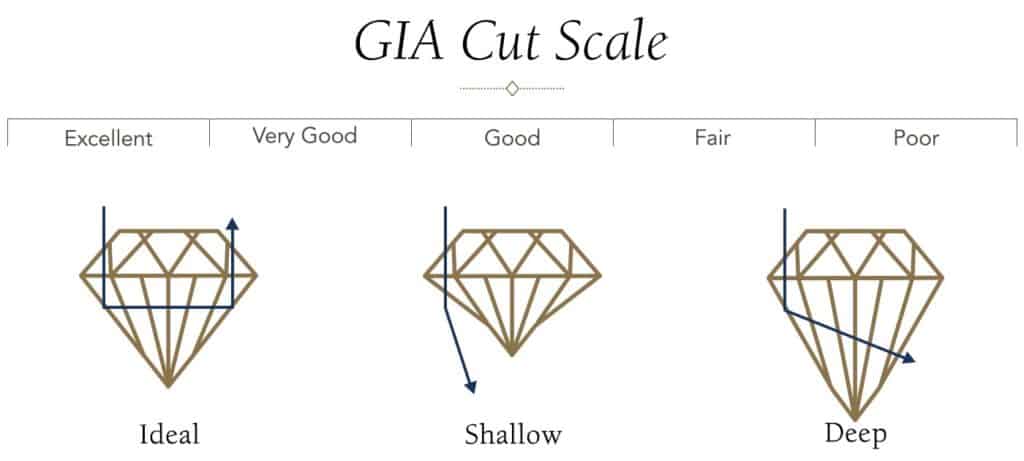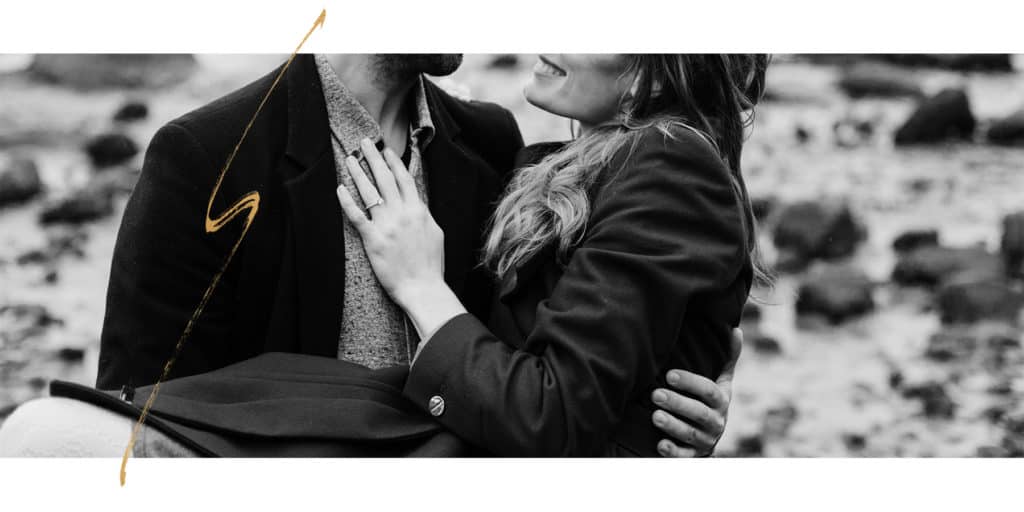Diamonds are certainly precious, valuable gems that come in a variety of sizes, shapes, colours, and quality. Yes, you read that right. Not all diamonds are the same in terms of quality. The quality of diamonds depends on certain characteristics, the presence of which makes a quality diamond. Before you make your purchase, learn about how to check diamond quality to make sure that you’re getting the best quality that you’re paying for.

However, you can’t tell the quality of a diamond by simply looking at it, especially if you have little to no experience. If you want assurance that you aren’t being ripped off by your jeweller, you need to become aware of the most important diamond characteristics that determine the quality of a gemstone.
The good news is that you can use a diamond grading chart used by professional gem experts to evaluate the quality of a diamond. This grading system is known as the 4Cs diamond chart developed by GIA. Side note, when you’re buying an engagement ring or getting a custom engagement ring designed, you always want to make sure the jeweller provides you with a certification for your diamond.
Understanding the 4Cs grading will give you enough information to help you know whether the diamond you’re buying is worth the money that you’re paying for it.
Understanding the 4 Cs for Diamond Quality
The four Cs are the four essential diamond quality factors that help evaluate a diamond’s quality. They are as follows:
- Colour
- Clarity
- Cut Quality
- Carat Weight (size)
1. Colour

The perfect diamond is always colourless. If there is any hint of colour in a diamond, it affects its price significantly. As you move lower down the colour scale, the colour changes from colourless to yellow to brown, and with that, the diamond’s price and quality fall too.
Many times, you, as a layperson, might not be able to detect these slight colour distinctions when checking diamond quality as they can be extremely subtle. However, even subtle variations in colour can make a massive difference when it comes to the quality, and hence, the price of a diamond.
However, here’s a bit of a caveat – coloured diamonds are not less expensive every single time. Some coloured diamonds are considered rare and are, therefore, insanely expensive! An example of such a coloured diamond is a red or canary yellow diamond. These diamonds are not only hard to find, but they’re also beyond affordability for many.
To accurately assess the colour of a diamond, turn the diamond face-down on a piece of white paper in a room with plenty of lights so that the tint, if there is any, becomes apparent.
2. Clarity

The second essential diamond quality characteristic is the clarity of the diamond. A perfect diamond will not have any surface imperfections or inclusions. The presence of inclusions is a sign of poor clarity and means that the diamond is of poor quality.
The clarity and purity not only indicates the quality of a diamond, but diamonds with less clarity will also be less brilliant in appearance. Diamonds with cloudy appearance are more prone to cracking, chipping, and shattering.
Flawless diamonds are incredibly rare and equally expensive. However, there is a high probability that a diamond that appears flawless isn’t actually flawless. Such a diamond is known as ‘eye clean’ diamond since it appears clean to the eye.
Generally, you want to stay away from anything lower than SI2 on the diamond clarity scale standard.
3. Cut Quality

The next C in the 4Cs diamond rating is the cut quality; not to be mistaken with the diamond’s shape. The cut is a measure of how well light can dance through the stone’s facets. That’s what gives diamonds their irresistible sparkle and fire. Though there are four diamond cut grades, at Claremont Diamonds we only carry the top three (Excellent, Very Good, and Good) and to make sure you get a diamond with maximum brilliance.
The quality of a diamond plays a vital role in its aesthetics as a diamond that is well-cut dazzles at every angle as every facet interacts beautifully with the light that falls over it. A well-cut diamond sparkles more and seems to have more life to it.
The quality of cut is crucial not only for the quality of diamond but also for diamond’s final beauty and value. And of all the 4Cs diamond chart, it is the most complex and technically difficult to analyze.
GIA
A high quality diamond has to have the following optical effects to be termed as a diamond with a perfect cut:
· Brightness
This encompasses the extent of the white light that the diamond reflects.
· Fire
The fire of a diamond refers to the array of colours that are seen on the surface of the diamond when the white light refracts as a result of a prismatic effect.
· Scintillation
This factor is the ratio between the dark and light areas of a diamond. A quality cut is one that gives the perfect contrast between dark and light areas of a diamond. This provides a brilliantly sharp appearance.
To make sure that you’re buying the best quality diamond for the price you’re paying, examine it under different lighting conditions (indoor and outdoor) to see how brightly it shines.
4. Carat Weight

Of all the essential diamond quality factors, carat weight is the most objective. Larger diamonds with more carat weight are more expensive and of higher quality as compared to those with lower carat weight. The carat weight is most associated with the value and quality of the diamond; however, all 4 Cs should be used when you’re measuring the quality of a diamond.
Diamonds are available in the following weight delineations: one quarter, one half, one, etc. The most accurate carat weights are represented in decimals. A diamond that is rounded off to one carat should be significantly less expensive as compared to a diamond that is actually one carat.
Carat weight shouldn’t be treated as the ultimate factor of quality, though. A 2-carat diamond that has poor clarity, cut, and a tint of colour will be less expensive than a one-carat diamond that has better clarity, cut, and no colour variation.
You should be mindful of the fact that two diamonds may appear different in size, even if they are the same in carat weight. This is because some diamond shapes make them look bigger than others.

It goes without saying that diamonds are incredibly expensive, and to save yourself from diamond-related scams, even after examining the 4 Cs of diamond grading, further quality verification is always a good idea. If you want to be perfectly sure that the quality of the diamond you’re buying is worth the price you’re paying, you can have a look at the diamond certification, which is a document compiled by a GIA that rates the diamond on the 4 C grading scale.
Now that you know all about the essential diamond quality factors, you’re good to go diamond shopping!

